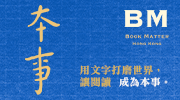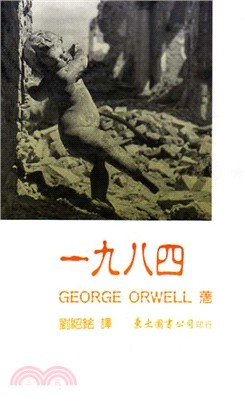The Hesitant Feminist’s Guide to the Future
商品資訊
ISBN13:9786267032695
出版社:淡江大學出版中心
作者:Ivana Milojević
出版日:2024/09/01
裝訂/頁數:平裝/96頁
規格:26cm*19cm (高/寬)
版次:1
商品簡介
FOREWORD
At the beginning of 2024, I was invited to contribute to a project focused on women who engage in futures thinking and foresight. As a cornerstone of the project, a seminarwas planned to celebrate
International Women’s Day. In preparation for the event, a vibrant exchange unfolded in a WhatsApp group. Participants, including myself, posed questions, suggested sessions, and explored shared concerns and interests. The following were some of the questions raised:
• Why do so many people, who agree with the principles of feminism, hesitate to identify themselves as feminists?
• What does feminism signify in 2024?
• How should we define it?
• Can individuals of genders other than women be feminists?
• Is feminism still relevant, or is it considered passé?
• Does the concept of feminism require rebranding?
• Should we discuss feminism in the singular or feminismS in the plural?
• Are we now closer to achieving the central feminist vision of an equitable future than ever before? Or perhaps as close as we’ve ever been? Or have we moved further apart?
• Has this envisioned future already materialized in some places, albeit with uneven distribution?
• What would the world look like if all genders have equal say – and
what implications would this shift have for our cities, economy, polity, diplomacy, environment, technologies, families, bodies, and minds?
In preparation for my own session, “Towards Feminist Futures (and Beyond),” I began to answer some of these questions. Granted, I have discussed some of these questions many times before. For example, Karen Hurley, Anne Jenkins, and I co-edited a special issue on “Feminist Futures” in 2008. In the introduction we noted that it had been nearly twenty years since journal Futures published another special issue on “Gender and Change,” co-edited by Magda Cordell McHale and Peggy Choong. McHale and Choong summarised the need for the 1989 special issue as follows:
As we approach the end of the 20th century, we seem to be fraught with self-doubts and burdened with unmanaged problems … Clearly, the crises we face today call for a different approach. The principles of ‘masculinity’ have shown themselves to be limited and deficient. A softer, more caring attitude is required [which] recognizes the quality and values of the entire human race.1
Our opening paragraph, started with the commentary on the previous special issue and read as follows:
Eighteen years on, the changes have increased in number and magnitude, but in some ways, and in regard to gender issues, ‘the more things changed the more they stayed the same’. The above theme—of current crisis, the emergence of a new phase, and the potential for this new phase to be qualitatively and positively different—has been a constant in both futures and feminist literature.2
In 2011, Ulrika Gunnarsson-Östling published a comprehensive overview titled “Gender in Futures: A Study of Gender and Feminist Papers Published in Futures, 1969-2009. She writes:
1 McHale, M. C., & Choong, P. (1989). Towards a renewed humanism. Futures, 21(1), pp. 3–4.
2 Milojević, I., Hurley, K., & Jenkins, A. (2008). Introduction: Futures of feminism. Futures,
40(4), p. 313.
Gender studies are closely linked to normative feminist research, striving for a world where men and women can function freely and fairly, which could be seen as a feminist future goal. However, this goal is often rather imprecise. Correspondingly, normative futures studies aim at reaching important targets, e.g., ecological sustainability. Although futures studies seldom have a gender perspective or feminist aim, attempts have been made to integrate a gender/feminist perspective into futures studies and some writers have done considerable works in this field.” 3
With Åsa Svenfelt and Mattias Höjer, Gunnarsson-Östling published another article in 2012 titled “Participatory Methods for Creating Feminist Futures,” asserting:
Gender perspectives in futures studies are rare and often sidelined, but there is also a feminist quest for feminist descriptions of the future.4
This quest is not new. It has been around for decades if not centuries. When I entered the field of gender studies in the 1980s, I heard questions similar to those asked at the beginning of this Foreword. And when I entered the field of futures studies in the 1990s, I was fortunate to meet and be inspired by prominent women futurists such as Elise Boulding, Hazel Henderson, Magda McHale and Eleonora Masini, who theorised futures from ‘women’s ways of knowing’ in many ways. I also read and was inspired by the works of other women who previously engaged in futures thinking and foresight (and some still do), such as Patricia Aburdene, Frances Bartkowski, Martha Garrett, Linda Groff, Debora Halbert, Donna Haraway, Gro Harlem Brundtland, Patricia Huckle, Riane Eisler, Kathy Ferguson, Donella Meadows, Margaret Mead, Barbara Marx Hubbard, Betty Reardon, Elisabet Sahtouris, Lucy Sargisson, Lynne Segal, Vandana Shiva, and many others.5
3 Gunnarsson-Östling, U. (2011). Gender in futures: A study of gender and feminist papers published in Futures, 1969–2009. Futures, 43(9), pp. 1029-1039.
4 Gunnarsson-Östling, U., Svenfelt, Å., & Höjer, M. (2012). Participatory methods for creating feminist futures. Futures, 44(10), pp. 914-922.
5 A list of some of those publications is provided at the end of this text.
There are historical and contextual reasons why gender-based perspectives in futures—and beyond—are mostly brought to light by women6. Nonetheless, building on the efforts of previous generations of authors and futurists, I’ve since worked with many female and male colleagues, who either explicitly or implicitly supported the work toward feminist futures7. As this number would be in dozens or perhaps even higher, I will not burden the readers with a list but would just like to acknowledge the existence of those individuals (and they would know who they are). At the same time, I would like to explicitly acknowledge the amazing support I received when preparing this text for publication: Lavonne Leong who graciously provided detailed feedback, Tatjana Konakov and Irena Durmišević who prepared it for publication, and Nur Anisah Abdullah, Sohail Inayatullah, and Jose Ramos, the editors of the Journal of Futures Studies monograph series who were instrumental in finding its current ‘home.’
Going back to the 2024 project promoting the work of women futurists, what was to be a Power Point presentation or a couple of paragraphs for my session grew into this text. I’ve entitled it “The Hesitant Feminist’s Guide to the Future” because time and again, I see a genuine desire among futures workshops participants and foresight practitioners to engage with feminist futures visions, followed by some reluctance to do so. Recently, I’ve run futures sessions focused on gender for a national police commission, a government ministry, a multilateral development organisation, a regional organisation, and an NGO. The question-and- answer format emerged as ‘less threatening’. Thus, many chapters, but not all, are in the question-and-answer format. Of course, workshops and presentations are more dynamic and engaging than written text. Nonetheless, I hope this format will be helpful for communicating ideas through writing as well.
In the chapters that follow, I begin with a historical overview, because understanding our futures and presents—where we want to go and where we are—requires knowing where we have been. After all, the very distant ancestors of the modern futurists were not soothsayers but historians.8 Historical context is important when investigating current
6 Milojević, I. (2018). Gender and the future: Reframing and empowerment. In R. Miller (Ed.), Transforming the Futures: Anticipation in the 21st Century (pp. 257-267). UNESCO.
7 A detailed list of my previous publications, which reference these influences, is provided at the end of this text.
8 Cornish, E. (1977). The study of the future. An introduction to the art and science of understanding and shaping tomorrow’s world. World Future Society. p. 52
questioning of feminist relevance and how (or whether) it should be updated. I also touch upon contemporary debates on intersectionality, whether patriarchy as a system itself has a gender (or not), and whether it matters that requests for gender equality and gender equitable futures are framed as feminism in the first place. I conclude with a brief summary of the key points, scenarios, and visions by feminist futurists in general, and seven futurists in particular. At the very end, just for fun, there is a ‘quiz’ — a reflective checklist aimed at investigating one’s own alignment with the principles of feminist futurists.
Certainly, this text is not complete, nor is it everything I’d like to say on the subject. For those wishing to know more, there is a list of recommended readings at the end. But I do hope this monograph will be useful for both seasoned feminist futurists as well as those sitting on the edge. At the very least, I hope that the following text will provide some food for thought, remind of historical context, and contribute to the future institutional memory.
作者簡介
Ivana Milojevic
University of Novi Sad Professor
University of the Sunshine Coast Professor (Associate)
1.CLA 3.0-THIRTY YEARS OF TRANSFORMATIVE RE-SEARCH
2.Transformer le Futur: l'Anticipation au XXIe Siècle(2020)
3.Transforming the Future: Anticipation in the 21st Centu-ry(2018)
4.CLA 2.0: Transformative Research in Theory and Prac-tice(2015)
5.Alternative Educational Futures (Educational Futures Rethinking Theory and Practice)(2008)
6.Educational Futures: Dominant And Contesting Visions(2005)
目次
13•A Historical Introduction: Of Spinsters and Man Haters
16•The Times They Are Changing?
19•Feminism vs Gender Equality?
21•Are You a Feminist?
23•Why Feminism?
30•When Feminism?
33•Embracing and Resisting (Feminist) Change
39•We Create Our Language, Then the Language Shapes Us
42•Miss/Mrs/Ms/Mx Meets Beowulf Meets Political Correctness
45•Are You a Feminist (Take Two)?
47•What Is Violence? Violence Typology
52•Beyond Patriarchy: Is Matriarchy the Alternative?
56•Does Patriarchy Mostly Benefit or Hurt Men?
62•What About Men? Can They Be Feminists?
67•Why (Not) Feminism (Take Two)?
70•But Does It Matter if This Term Is Used at All?
75•What Do Feminists (and Feminist Futurists) Want?
78•Taking Gender Into Account: Scenarios and Visions by Seven Futurists
84•Where to From There? Gentle, Partnership, Diverse and SHE Futures
86•Conclusion: Are You a Hesitant Feminist Futurist?
88•A Library: Selected Resources for Building Feminist Futures
主題書展
更多書展今日66折
您曾經瀏覽過的商品
購物須知
為了保護您的權益,「三民網路書店」提供會員七日商品鑑賞期(收到商品為起始日)。
若要辦理退貨,請在商品鑑賞期內寄回,且商品必須是全新狀態與完整包裝(商品、附件、發票、隨貨贈品等)否則恕不接受退貨。


























